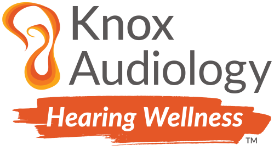Diagnostic Hearing Assessments
Knox Audiology provide a comprehensive range of hearing tests appropriate to the age and stage of the individual.
Visual Reinforcement Audiometry(VRA)
Visual Reinforcement Audiometry (VRA) refers to the way audiologists test the hearing of young children aged between 9 months and 3 years. This assessment involves the audiologist, child and carer sitting together in a sound proof booth. The audiologist presents a sound through a speaker and a dancing puppet is revealed. The child is taught that every time they hear a sound, they will also get to see the puppet dance. Once the child has learnt the game, the audiologist is then able to reduce the volume of the sound to see just how soft a sound the child can respond to. This is a very reliable and fun way to provide an accurate measure of a child’s hearing level.
Pure Tone and Speech Audiometry
Pure tone audiometry is the hearing test performed on anyone from the age or 6 years to 106 years(!) and involves listening to a series of tones at a variety of volumes and pitches, and pressing a button whenever a sound is heard. When testing children, this test is often presented as ‘computer game’.. Using different headsets and different sounds, it is possible to obtain a thorough and accurate assessment of how well someone can hear and how their cochlea is functioning . An assessment of speech perception, called Speech Audiometry, accompanies the Pure Tone testing, and involves listening to a recorded voice saying words, and the patient is asked to repeat each word heard.
What will happen after my hearing test?
After your hearing test, your audiologist will explain the results to you. The audiologist will then write a diagnostic report which is overseen by Ear, Nose and Throat medical specialist doctors. The report, once signed and approved, is sent either to yourself or your referring doctor. If there is an abnormality in your hearing test, your audiologist will direct you to the appropriate medical expert to obtain advice, further testing or treatment. Knox Audiolology will continue to monitor your hearing so long as there is an abnormality and liaise with your medical professionals as required.
Play Audiometry
Play audiometry refers to the way audiologists test the hearing of children aged 3 years to 6 years of age. This assessment is usually performed under headphones, and involves the audiologist presenting a sound at the same time as they place a toy peg in a peg board, or other similar task. The child is taught to do the task in response to the presentation of a sound. Once they child has learnt the game, the audiologist can vary the sounds to determine the softest sounds a child can hear at a range of different pitches, in each ear. The audiologist may also use a headband to test the child’s cochlea (or inner ear). Play audiometry is usually accompanied by a test of speech sounds using a set of toys or pictures that have matched vowels sounds eg ‘fork’ and ‘horse’, to see how well the child can discriminate between different speech sounds.
Tympanometry
Tympanometry measures the function of the middle ear system – the only moving part of the ear. Tympanometry measures the size of the ear canal, the mobility of the ear drum and the air pressure within the middle ear cavity. This tells us lots of important information such as whether the ear drum is intact, whether the small bones in the ear are transmitting vibrations adequately and whether there is fresh air being circulated in the middle ear cavity via the nose and Eustachian Tube. Tympanometry can also give us information that might enable ENT specialists to make decisions about medical conditions such as ‘Glue Ear’ or Otosclerosis. Tympanometry can be performed on all ages, and children love to see the ‘picture that my ear draws’ during tympanometry!
